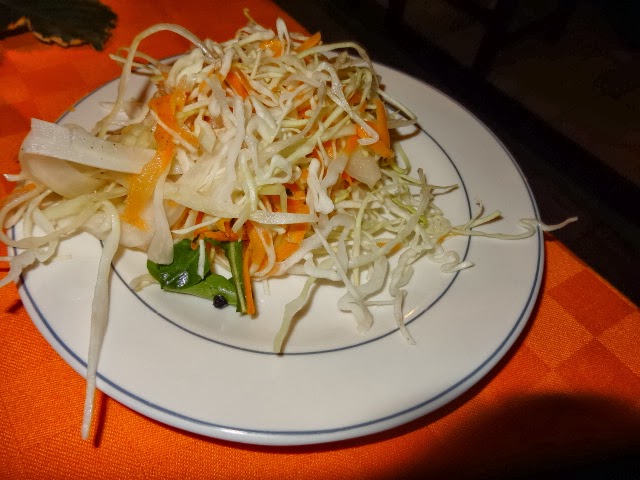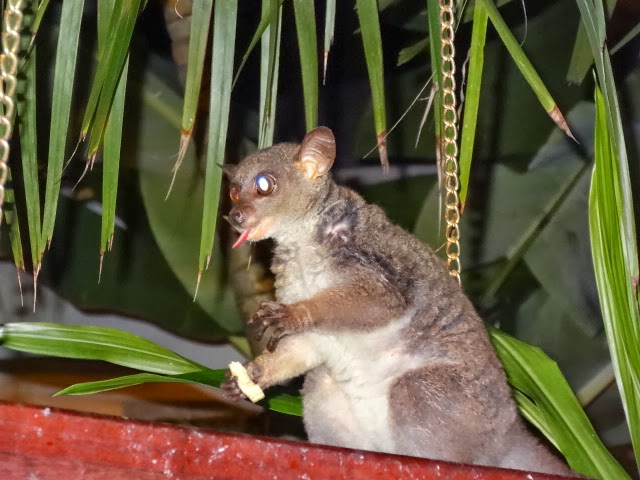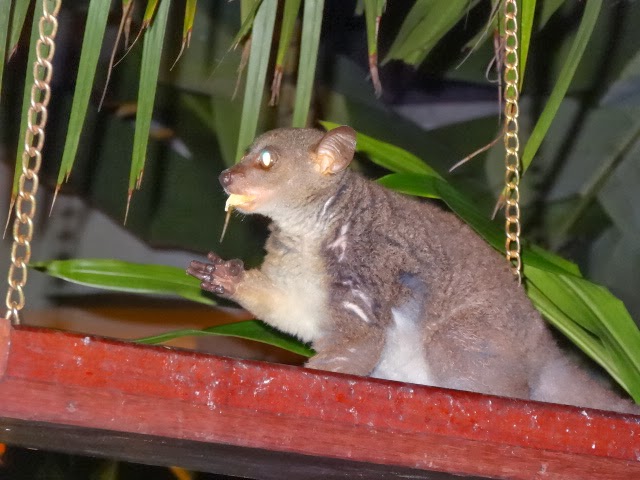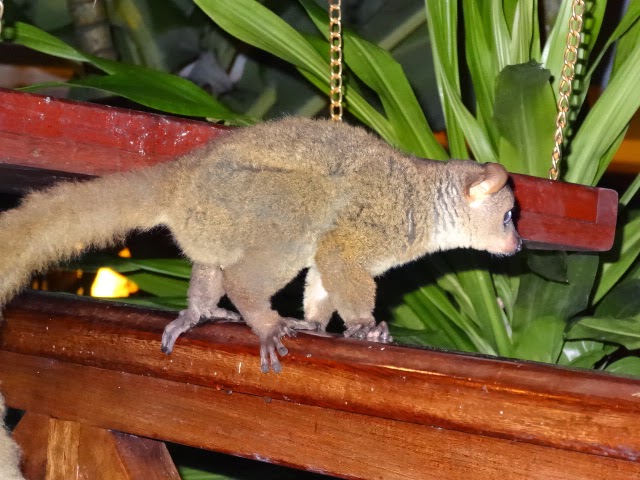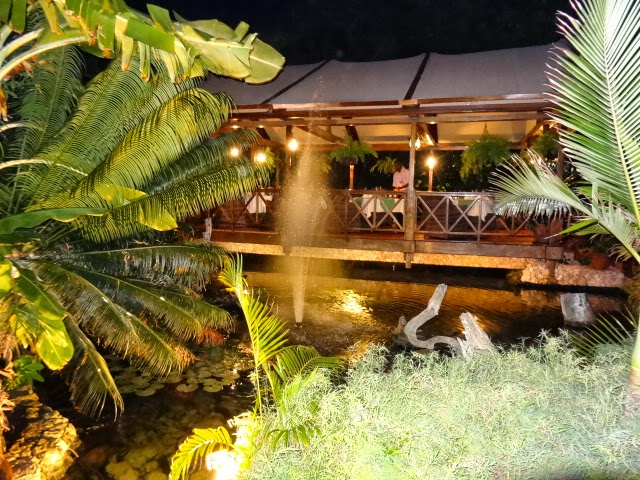 |
| A first glance, these could be a fashion-forward pair of women’s black boots. Nope. They’re the hind legs of a Warthog. Actually, all four legs have these spiky heels. This made us laugh. |
 |
| Warthogs are always on the lookout for a morsel. Notice how they get on their front knees when discovering a morsel. We howled over this when on safari in the Masai Mara and now, again here. |
 |
| Baby butts up on the air, on their knees, eating the vegetation around this tree. |
Living in the bush, in a constant state of awe of our surroundings, we find humor in the most mundane of events or in the interesting activities of the wildlife surrounding us.
 |
| Butting heads while the third baby stands by, awaiting a turn. |
 |
| Moments later, he got his turn to butt heads while the former participant wandered away. |
 |
| When we first arrived, we noticed a baby warthog lying still on the driveway. Several of the others stopped by, sniffing it and walking away. The mother sniffed it and walked away. We panicked thinking the baby was dead. Suddenly, it jumped up, engaging in play with the others. Now, we observe this as a common occurrence, perhaps a behavior of dominance. |
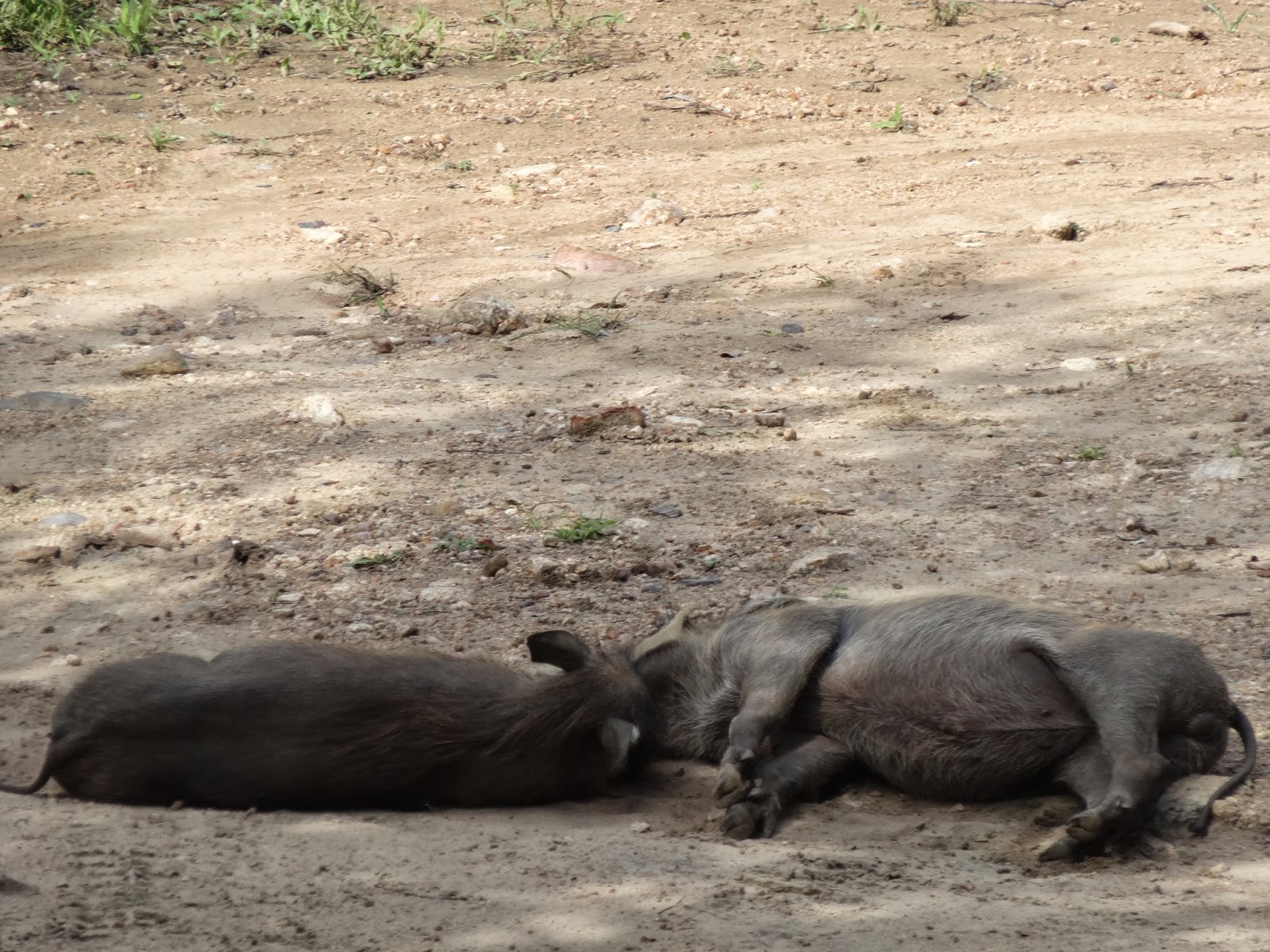 |
| These two kissed and sniffed each other while lying down. |
The vegetation stuffed cheeks of the giraffe when he takes a break from his treetop munching to check us out, making eye contact, not only warms our hearts but makes us laugh. Mother Nature has a sense of humor. Surely us humans, are funny with our rituals, habits and, actions.
 |
| This baby did the same as the others as if playing dead. |
 |
| This mother stopped to look at me. The way warthogs make eye contact and listen to my voice, makes me laugh every day. |
We’re not laughing at them and, I won’t use the standard phrase that they are “laughing with us.” They aren’t. But, why we’re laughing is due to the fact that they are like us in so many ways: stomping their feet when they want attention, snorting when dissatisfied or annoyed, reacting sexually when visually stimulated, constantly thinking about food, needing warmth, comfort, and love and for many, the desire for companionship with their family and friends.
 |
| The standing baby was trying to nurse the lying baby. |
God, a Higher Power, or Mother Nature, whatever your beliefs, made us alike in many ways so that we cohabit in this world together. And, at times, that likeness, combined with our differences, can incite a bout of laughter, a smile on our faces, or merely a twinkle in our eye leaving us feeling a sense of happiness and fulfillment.
 |
| Without cause, they’d finally had enough of us and began to take off onto one of the many animal worn paths at varying points in the yard. |
How fortunate we are to embrace this? Whether we laugh from the antics of our dogs or cats which is one of the main motivators in including pets in our lives or, the playful shenanigans of an animal in the wild, it is the same warm, fuzzy feeling that brings us laughter, pleasure and a sense of belonging, if only for a moment, in their world.
 |
| Goodbye, warthog family of nine with a few yet to catch up. We’ll see you again soon. |
Today, we share with our readers, some laugh provoking moments with one of my favorites, the maligned warthog, whom by now many of our readers may say, “Enough already, with the Warthogs.” Humor me. They, by far, have made us laugh more than any creature in the bush, especially when these events shown in the included photos occurred a few days ago.
Some say that their ugliness is off-putting. Certainly, they are no more ugly than Elwood, the Chinese Crested Chihuahua, who warmed the hearts of millions as the World’s Ugliest Dog in 2007. We enjoyed Elwood because he was ugly. Thus, we enjoy warthogs for a similar reason. Add their playfulness, their intensity, their determination, their curiosity and they easily become a favorite.
 |
| We ended the delightful day with this meal. My plate is on the right with the Brussels Sprouts which, of course, Tom would never eat. At least he’ll eat the green beans and coleslaw. |
After their lengthy visit, freely allowing us to take photos of their most intimate family fun, the heat of 100F, 38C weather drove us indoors to the AC, another delicious homemade meal, a movie, a good night’s sleep.This morning we awoke to a live bat in the kitchen sink.
Life in the bush is hot and humid, filled with unbelievable insects and critters (we’re adapting). But we find it to be exciting and often humorous.
Do you know what is really funny? That two senior citizens, former homebodies, conservative and cautious, are sitting here in the bush to tell about it!













































